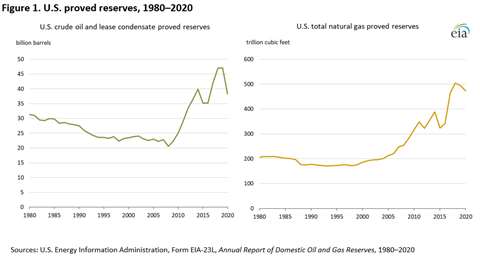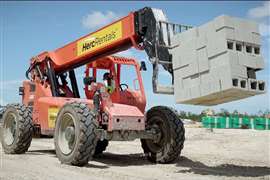Weaker gas prices led to decline of U.S. gas reserves
26 January 2022

U.S. natural gas operators reported that their proved reserves declined by 4% in 2020 to 473.3 trillion cubic feet (Tcf) because of lower natural gas prices in the first year of the COVID-19 global pandemic, according to a recent report from the U.S. Energy Information Administration.
The report, known as the Proved Reserves of Crude Oil and Natural Gas in the United States, Year-End 2020, is based on estimates from U.S. gas operators. Proved reserves reflect the volume of natural gas that geological and engineering data demonstrate with reasonable certainty to be recoverable from known reservoirs under existing economic and operating conditions.
The average annual price of natural gas at Henry Hub fell from $2.56/MMBtu in 2019 to $2.03/MMBtu in 2020.
The decline in gas prices led many operators to lower their estimates of proved reserves and to scale back plans to develop new wells. Although the final data for 2021 is not yet compiled, the EIA said it expects stronger gas prices in 2021 will likely lead to more proved natural gas reserves in 2021.
Operators in Texas reported the largest decrease in natural gas proved reserves in 2020, down 11 Tcf, or 9%. Pennsylvania was second, with a decline of 9.6 Tcf, or 9%, the EIA reported.
By contract, proved reserves of natural gas increased in Alaska rose from 9 Tcf to 36 Tcf after a large-scale liquefied natural gas development project received federal approval in May 2020. The project will include a new pipeline that will transport natural gas from the north slope of Alaska to a liquefaction plant and export facility on its southern coast. With the pipeline, a large volume of previously stranded natural gas resources began to meet the definition of proved reserves, the EIA reported.
The decrease in 2020 was the second consecutive annual decline in proved reserves.
Reserves estimates change from year to year because of new discoveries, thorough appraisal of existing fields, production of existing reserves, changes in prices, costs, ownership or planned infrastructure and new technologies. Discoveries include new fields, new reservoirs in previously discovered fields, and additional reserves that resulted from drilling and exploration in previously discovered reservoirs (extensions). Extensions typically make up the largest share of total discoveries.
Between 1980 and 1996, U.S. reserves of natural gas and oil saw a steady decline. In 1997, the downward trend for natural gas reserves reversed as operators introduced innovations in directional drilling and hydraulic fracturing, which boosted proved and production of gas from shale formations.






